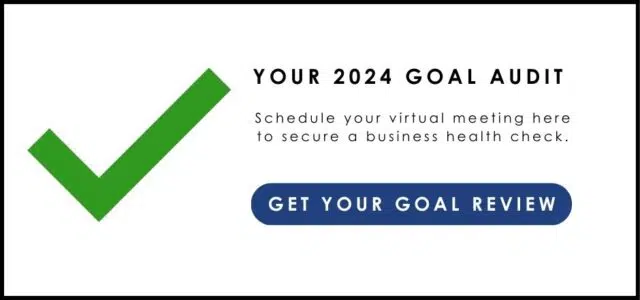By Kate Gorman
As fast as our marketplace is evolving, our human infrastructures are commanding change to keep up. Organizational charts by department, linear work streams, strict job descriptions and localized search are becoming as outdated as the old IBM employee concept of “from recruitment to retirement.” And while there has been much focus on the new workforce and the need for diversity in an organization, little has been done to innovate corporate and field staffing models.
The retail industry has often been known for turnover and movement, but part of omni-acceleration in the age of Amazon does require brands to rethink their talent strategies. That’s where the Columbus Consulting L.I.S.T. comes in. After working with over 300 clients for 20+yrs, Columbus has tracked what successful retailers are doing and continue to do to evolve and thrive in an ever-changing marketplace. The L.I.S.T. stands for Logistics, Inventory, Structure and Technology; the four pillars that we believe retailers must invest in now to become or stay relevant. Structure, in this scenario, is about organizational structure, inclusion, diversity and equity. It is not a buzz concept, but rather an entire approach to assessing talent, roles and longevity within a company.
Brands have made great strides in their commitment to create more diverse and equitable environments. While many companies may view diversity as the ethnicity of its employees and representation of its consumers, we all should see diversity in a broader sense, including: age, gender, orientation, ethnicity, size, skill-sets, location and tenure. Diversity can also speak to the actual hierarchy and reporting infrastructure within an organization and the channel-less mentality that provides more fluid and agile work streams and environments.
Here are three key areas to consider in 2022 related to building an evolved organization:
- NEW vs LEGACY TALENT
- CHANNEL-LESS TEAMS
- GEOGRAPHIC EXPANSION AND DIGITAL PROFICIENCY
NEW vs LEGACY TALENT
Having employees with longevity in your organization can be a huge benefit, especially for lifestyle brands who need internal storytellers to maintain the heritage of the company. Today, however, it is critical to season the talent pool with newness and diversity. Employees who have only worked in one organization may not have the ability to see different ways of working. They also don’t have the benefit of bring successes and failures from outside the company. Talent from outside of an organization, in turn, can add new and different dimensions to a team. The “been there and done that” mentality needs to be challenged with healthy debates. Bringing in external employees can help by elevating productive conflict and friction that leads to positive evolution. There is no place for the status quo any longer in the retail marketplace. If consumers are growing and changing, then your employee population needs to reflect that and be more diverse. This definition of diverse, again, is multi-level and includes having a cross section of age groups, cultures and skillsets. Hiring only like-minded people can be a detriment to change and without change could work against growth and staying relevant.
CHANNEL-LESS TEAMS
Over the last two years we have seen an acceleration of seamless shopping across channels and across platforms. Customers have dictated a need and desire to have virtual inventories available to them at any time from any place. Overnight and same day delivery are becoming a point of entry for brands and the consumer now has an expectation that you will be able to accommodate them accordingly. Organizational structure needs to support this shift in demand. The linear product-centric approach to creating an item, marketing an item and selling an item has been replaced by the circular selling cycle of customers identifying what they want through digital and physical engagement, searching for the preferred purchase path and requiring immediate satisfaction/delivery. How is this different? This circular selling cycle mandates that organizations embrace a channel-less approach to their structures, KPIs and investments. Having channel experts who can build best-in-class models for store experience, call center engagement and online shopping are still required, but having a layer of cross functional, integrated employees who think about the customer and not the channel is now at the core of the circle. Companies need to revisit their organizational charts and build more fluid work streams that cross over disciplines to replicate how customers shop and engage with brands today.
GEOGRAPHIC EXPANSION AND DIGITAL PROFICIENCY
The pandemic presented many new challenges for both employers and employees. From furloughs and layoffs to remote workforces and sanitized offices and PPE practices. While this “great reset” did allow for right-sizing and re-thinking of organizational structures, it also forced companies, for the first time, to rely on mostly remote talent for periods of time. Remote operations now needed to leverage technology and virtual work processes to keep businesses moving forward. Start-ups and tech companies naturally gravitated to this staffing model, as did global organizations who needed to adapt to multiple locations before it was required. Now, with the new expectations from the pandemic, employees have gotten accustomed to a new type of work-life balance. Working mothers, while not easy, were able to on-board back to the workforce more readily, suburban/urban commuters gained hours in their days from not being in transit and recruiters were now able to find talent outside of their geographic areas. Of course, this in-office/remote- office workforce is not an all or nothing structure. For every benefit associated with remote working, there are challenges as well. Managers need to adapt to new styles, learning how to engage, motivate and lead virtually; less digitally savvy employees need to become proficient in technology to keep pace; and C-level teams need to create a balance and equity system by role to maintain fairness, culture and efficiency. The cornerstone for success here is the investment in and use of technology platforms and the training of all employees on digital protocols (email is more formal, chats more social). Some employees will adapt seamlessly and effortlessly, but others may be at a disadvantage and need more of a learning curve. Indeed, underprivileged youth may not have had the same access to technology and mature employees may not be as digitally native-minded. The true definition of inclusion and equity means that where someone is today should not be a barrier for where they can get to in the future. This will require a new sensitivity for leadership beyond gender and ethnicity.
Building a diverse organization is not about how a company looks on paper. It is a mentality that embraces all aspects of the workforce. This includes: age, gender, orientation, ethnicity, physical size, location, tenure, skills, and even experiences and backgrounds. Companies cannot be expected to cater to every whim and need of an employee, as employees must seek to change and adapt as well. However, growing sensitivity, building awareness, allowing for tolerance and fostering equity will help to create a strong, multi-layered organization that will attract top talent, encourage healthy conflict and better represent the marketplace overall.

